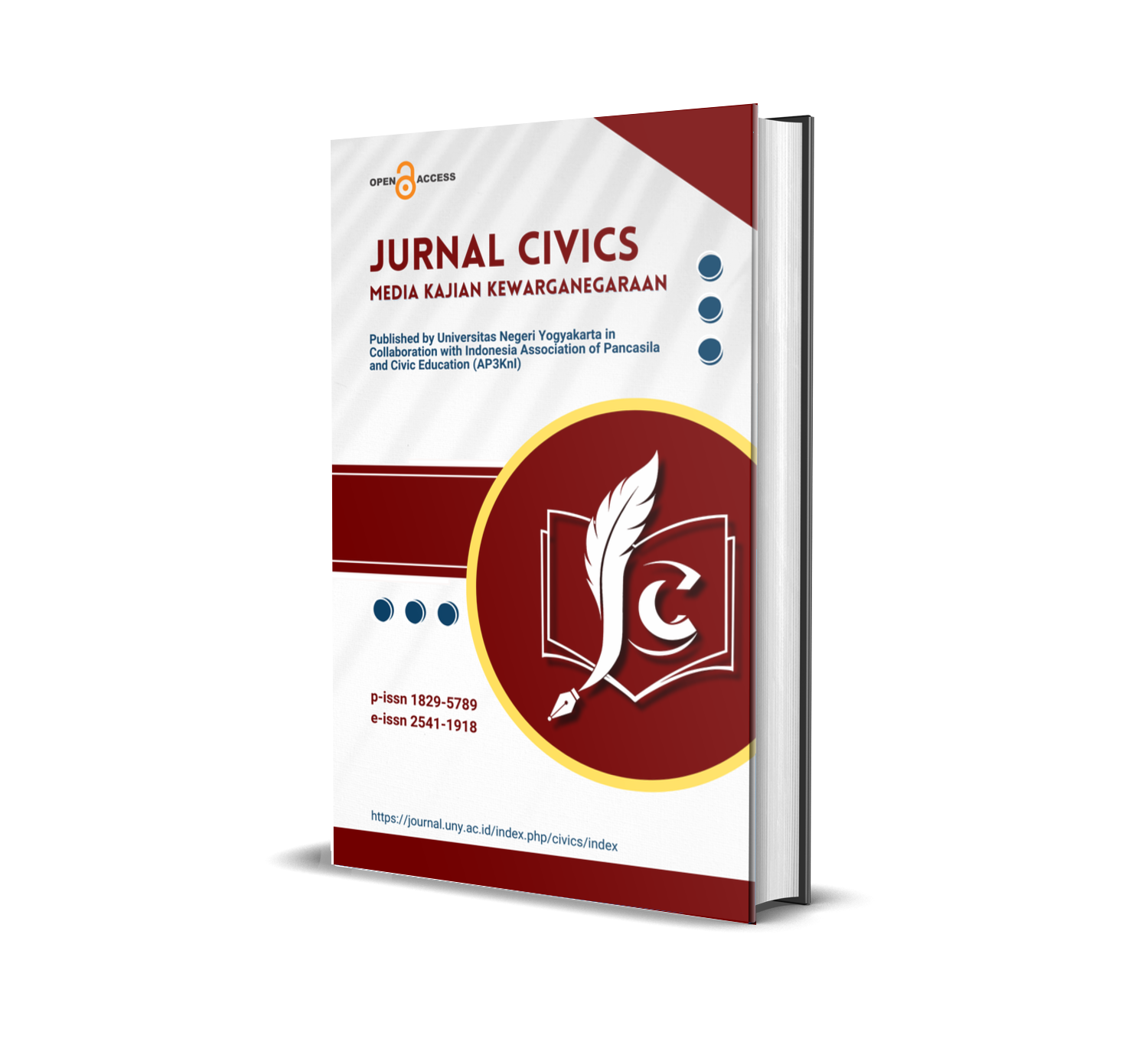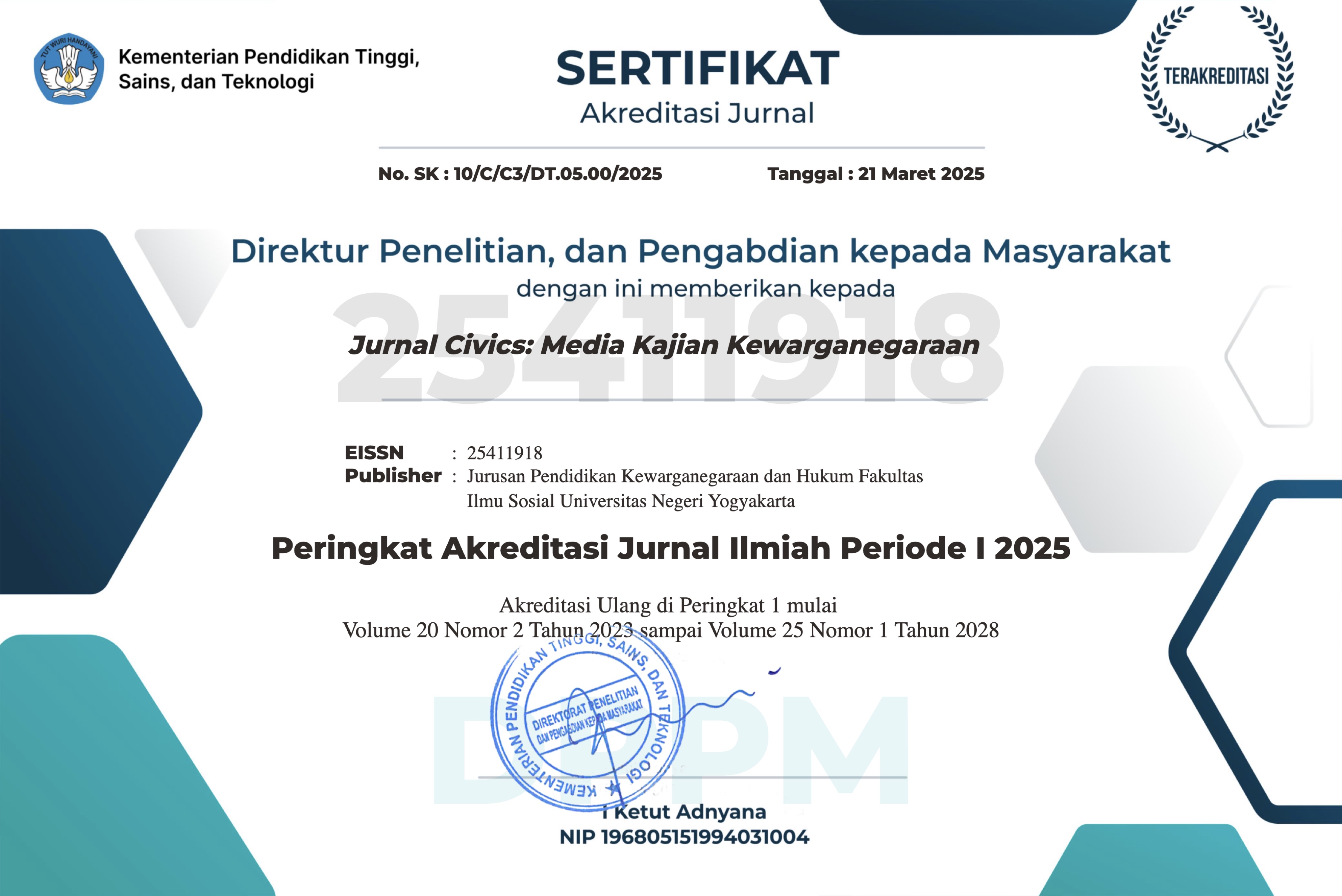Obstacles and efforts to overcome them in protecting children's rights against violence in elementary schools in the Sleman district
DOI:
https://doi.org/10.21831/jc.v19i2.53409Keywords:
children's right, protection children's rights, violence against childrenAbstract
The aims of this research are: to identify obstacles in protecting children's rights against violence in elementary schools in Sleman Regency and to describe efforts to overcome obstacles in protecting children's rights against violence in elementary schools in Sleman Regency. This research is a descriptive qualitative research approach. The research subjects were four school principals, three teachers and two education staff. Data collection techniques with interviews and documentation. The technique of checking the validity of the data is done by using cross check data. Inductive data analysis which includes data reduction, categorization and unitization of data, presentation of data and drawing conclusions. The results of the research show that in carrying out these protection efforts the school revealed that there were several obstacles faced. These obstacles come from within (internal) and from outside the school (external). Internal barriers in the form of the lack of the role of educational staff or employees and parents who are less open. While external obstacles such as violence occur outside the school which causes ignorance on the part of the school. schools make efforts to overcome internal and external obstacles in prevention efforts by creating child-friendly school programs and recruiting Counseling Guidance teachers.
References
Aufseeser, D. (2017). Street children and everyday violence. In Conflict, Violence and Peace (pp. 109–127). Springer Singapore. https://doi.org/10.1007/978-981-287-038-4_31
Creswell, J. W. (2014). Educational research : planning, conducting and evaluating quantitative and qualitative research. Pearson Education Limited.
Delamont, S., & Jones, A. (Social sciences editor). (2012). Handbook of qualitative research in education. Edward Elgar.
Ferrara, P., Franceschini, G., Villani, A., & Corsello, G. (2019). Physical, psychological and social impact of school violence on children. Italian Journal of Pediatrics, 45(1), 76. https://doi.org/10.1186/s13052-019-0669-z
Hanum, F. F., Hartini, S., Priyanto, A., & Suripno. (2020). Protection of child rights to violence in the elementary school in Sleman Regency. In The 4th ICSSED, International Conference of Social Science and Education (pp. 324–330). Sciendo. https://doi.org/10.2478/9788366675186-041
Karim, M. F. (2020). The limits of global human rights promotion: Indonesia’s ambivalent roles in the UN Human Rights Council. Contemporary Politics, 26(3), 351–370. https://doi.org/10.1080/13569775.2020.1720065
Lloyd, M. (2018). Domestic violence and education: examining the impact of domestic violence on young children, children, and young people and the potential role of schools. Frontiers in Psychology, 9. https://doi.org/10.3389/fpsyg.2018.02094
Mantalean, V. (2022). Pemerintah catat 6.500 lebih kasus kekerasan seksual terhadap anak sepanjang 2021. Kompas Com. https://nasional.kompas.com/read/2022/01/19/18555131/pemerintah-catat-6500-lebih-kasus-kekerasan-seksual-terhadap-anak-sepanjang
Neuman, L. W. (2014). Basics of social research: Qualitative & quantitative approaches. Pearson Education Limited.
Sandberg, K. (2018). Children’s Right to protection under the CRC. In Human Rights in Child Protection (pp. 15–38). Springer International Publishing. https://doi.org/10.1007/978-3-319-94800-3_2
Skovdal, M., & Campbell, C. (2015). Beyond education: What role can schools play in the support and protection of children in extreme settings? International Journal of Educational Development, 41, 175–183. https://doi.org/10.1016/j.ijedudev.2015.02.005
Stolba, A., & Amato, P. R. (1993). Extended single-parent households and children’s behavior. The Sociological Quarterly, 34(3), 543–549. https://doi.org/10.1111/j.1533-8525.1993.tb00125.x
Suryanto, B. (2010). Masalah sosial anak. Prenada Media.
UNESCO. (2019). Behind the numbers: Ending school violence and bullying. UNESCO.
UNICEF. (2020). The state of children in Indonesia. UNICEF.
Winterbottom, M., Smith, S., Hind, S., & Haggard, M. (2008). Understanding similarities and differences between parents’ and teachers’ construal of children’s behaviour. Educational Studies, 34(5), 483–510. https://doi.org/10.1080/03055690802288452
Zeng, R., & Li, Z. (2018). Analysis of the relationship between landscape and children′s behaviour in Chinese Residential Quarters. Journal of Asian Architecture and Building Engineering, 17(1), 47–54. https://doi.org/10.3130/jaabe.17.47
Downloads
Published
How to Cite
Issue
Section
Citation Check
License
The authors agree to transfer the transfer copyright of the article to The Jurnal Civics: Media Kajian Kewarganegaraan effective if and when the paper is accepted for publication.
Authors and other parties are bound to the Creative Commons Attribution-NonCommercial-ShareAlike 4.0 International License for the published articles, legal formal aspect of journal publication accessibility refers to Creative Commons Attribution-NonCommercial-ShareAlike 4.0 International License (CC BY-NC-SA).










